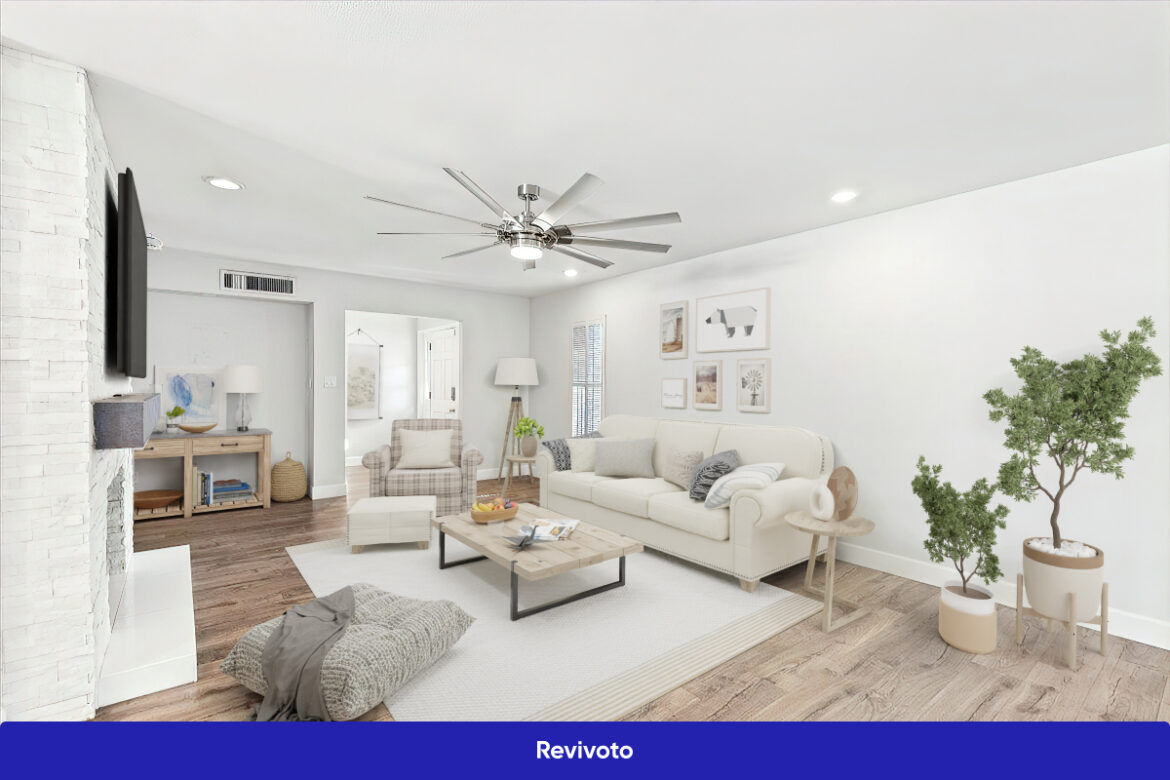There was a time when Farmhouse only referred to a house surrounded by a farm. As times changed, farmhouses evolved from a type of settlement to a setting. The elements of farmhouses shaped the characteristics of a new design style – a mode you could have anywhere, even in a city. With all these changes, why not bring farmhouse style to virtual staging?
As you know, virtual staging is all about visualization. It is supposed to help homebuyers imagine their home without depriving them of inspecting the property properly. Trending styles are all possible choices when it comes to staging a house virtually, from Contemporary to Hamptons. Among them, the farmhouse style is known for its warmth and coziness.
So, we’ll start by reviewing what makes farmhouse style stand out and then check out how it can be reflected in virtual staging.
Table of Contents
Backstory of Farmhouses
Farmhouses have a rich and storied history that stretches back centuries. These homes were built to provide shelter and comfort for the hardworking farmers and their families who toiled in the fields, raising crops and livestock to feed their communities. They were practical and functional, with a focus on durability and efficiency.
In the early days, farmhouses were typically constructed using locally available materials. Depending on the region, this might include logs, stones, or adobe bricks. The farmers often built their homes using traditional building techniques passed down through generations.
As time passed, farmhouses began to evolve to meet the changing needs of the farmers and their families. Advances in technology and transportation meant that farmers had access to a wider variety of building materials and could construct larger homes. The advent of indoor plumbing and electricity meant that farmhouses could be equipped with modern conveniences, making them more comfortable and livable.
However, farmhouses have always retained a sense of authenticity and connection to the land despite these changes. They are homes that celebrate the hard work and ingenuity of the farmers who built them, and they serve as a reminder of the importance of living in harmony with the natural world.
Farmhouse Style in 21st Century
Today, the farmhouse style is more popular than ever, with homeowners and designers embracing its warm, welcoming aesthetic. While modern farmhouses may look different from their historical counterparts, they still embody the same sense of authenticity and connection to the land that has made this design aesthetic so enduring.
The farmhouse style has deep roots in the history and culture of rural America. It emerged in the early 20th century as a response to the rapid industrialization of the country and a desire to return to a simpler, more authentic way of life. The practical and functional elements of the farmhouses influenced the design. Over time, this style evolved to include more decorative elements, but it always retained its focus on function and practicality.
Today, the farmhouse style is more popular than ever, celebrating the beauty of imperfection and the uniqueness of individuality, with each farmhouse home telling its own story. Whether you live in a modern apartment or a historic farmhouse, something about the style speaks to our desire for connection, community, and simplicity. It’s a reminder that even in our fast-paced, high-tech world, there’s still beauty and value in the simple things.
The Elements of Farmhouse Style
Raw and Rustic materials
Farmhouse design embraces the natural beauty of raw and unrefined materials. It brings a sense of warmth and authenticity to a space, evoking the feeling of being nestled in the countryside. The use of wood, stone, brick, leather, and metal brings the outside in. Also, the variations in texture and color add depth and interest to the design. Imagine walking into a farmhouse kitchen with a butcher block countertop, reclaimed wood cabinetry, and a vintage metal sink. You can practically smell the fresh-baked bread and feel the warmth of the hearth.
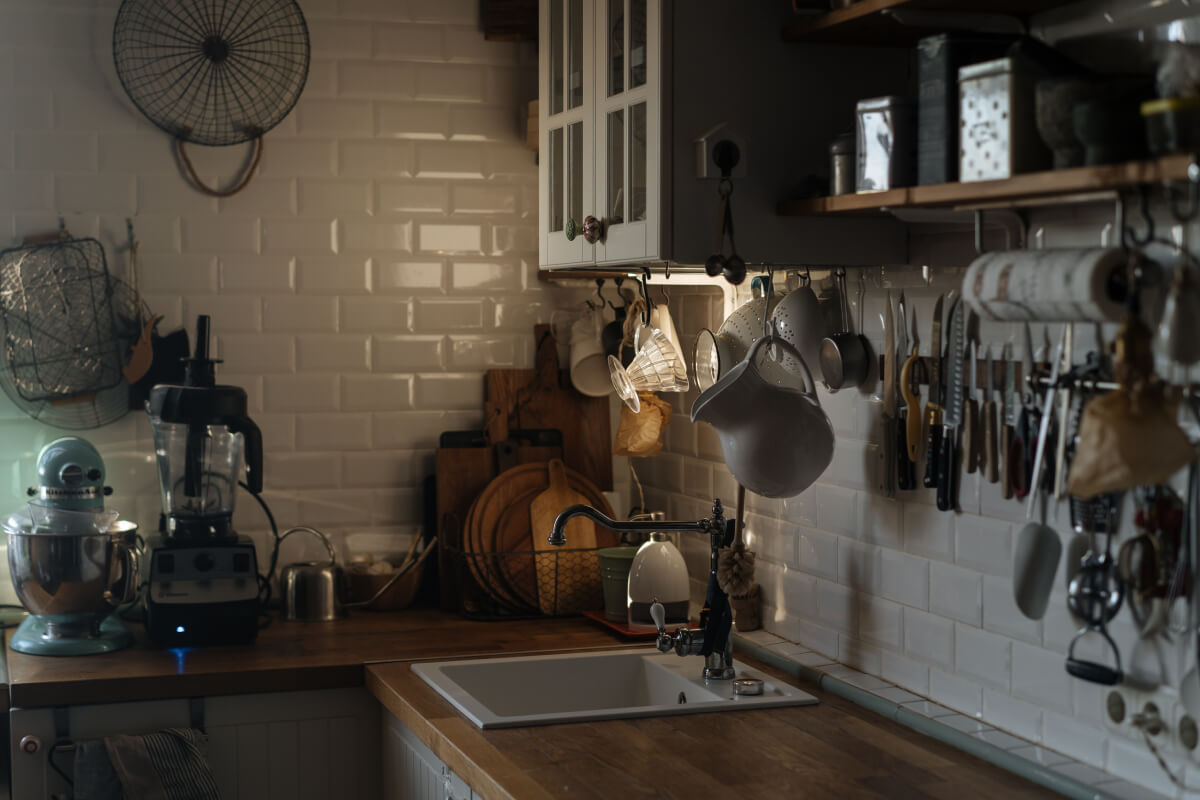
Simple lines and shapes
As discussed before, the farmhouse style is all about simplicity and practicality. It’s not about flashy ornamentation or intricate details but rather the beauty of a functional design. The lines are clean and uncluttered, allowing the eye to focus on the purpose of the space. Think of a farmhouse dining room with a simple wooden table, a few spindle-back chairs, and a vintage pendant light hanging above. The design is straightforward yet makes you want to linger.
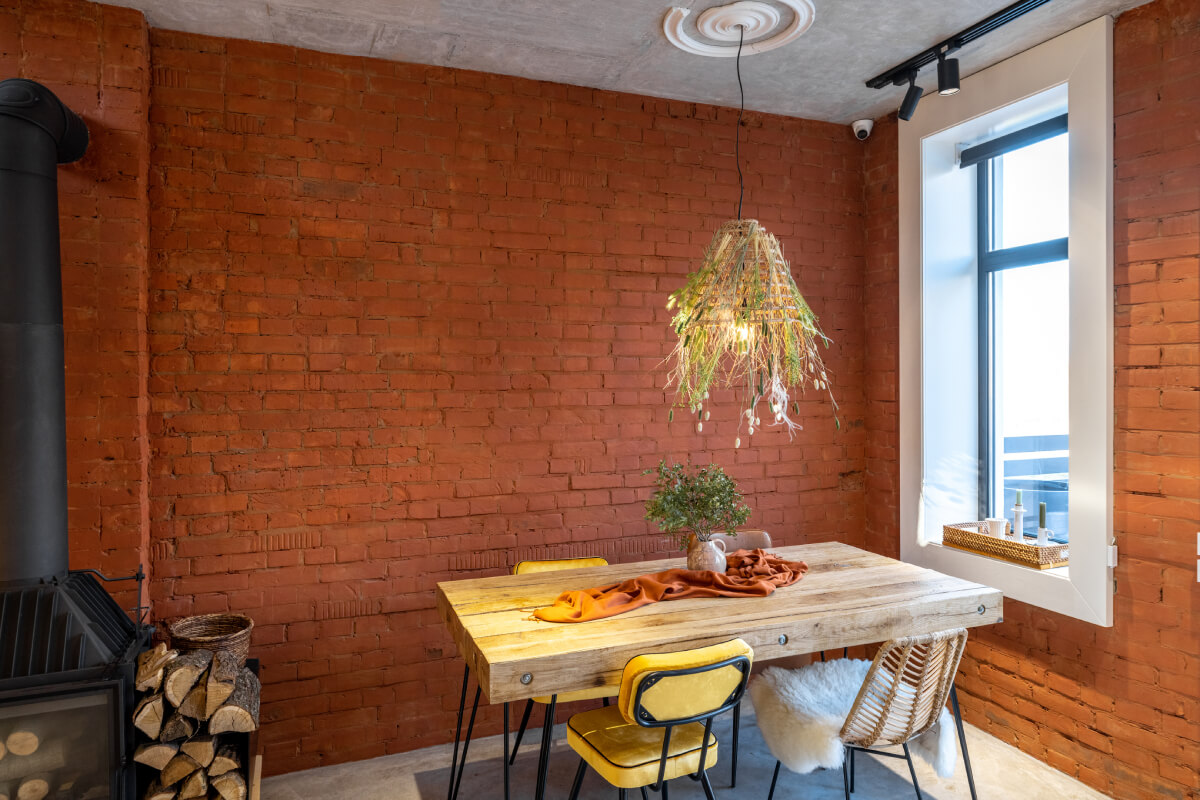
Neutral color palette
The farmhouse design opts for neutral colors creating a sense of calm and serenity. The soft, earthy beige, gray, and white tones provide a backdrop for the natural materials to shine. The lack of bold colors or patterns allows the eye to rest and appreciate the simplicity of the design. For instance, a farmhouse bedroom would be like this: crisp white linens, a cozy gray throw blanket, and a monochrome rug underfoot. The colors are soothing and peaceful, creating a sanctuary for relaxation.
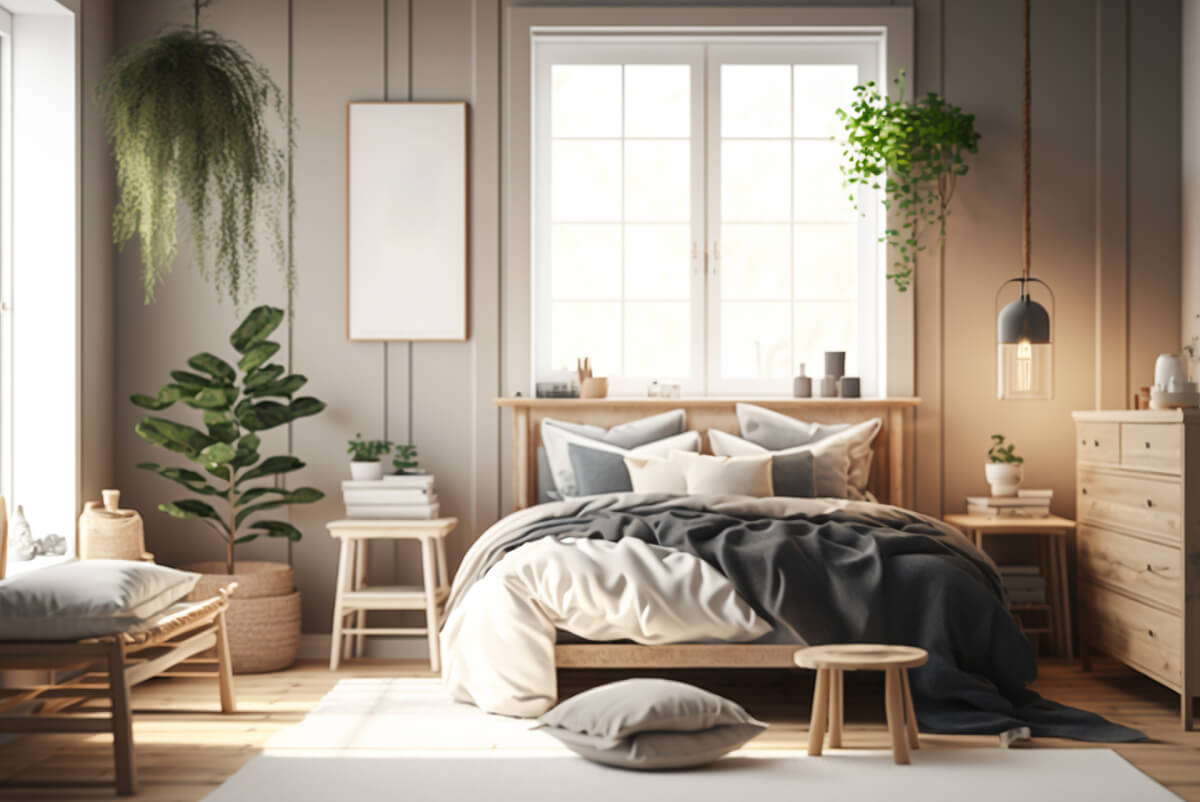
Greenary
Farmhouse design is all about creating a warm and inviting space – incorporating greenery and natural elements inside and outside the home shapes that sense of home. That can include potted plants, herbs, flowers, and even larger outdoor elements such as trees, shrubs, and gardens. The use of greenery brings the outdoors in, creating a sense of tranquility. Not only does it add to the overall aesthetic of the space, but it also has numerous health benefits, including improving air quality and reducing stress.
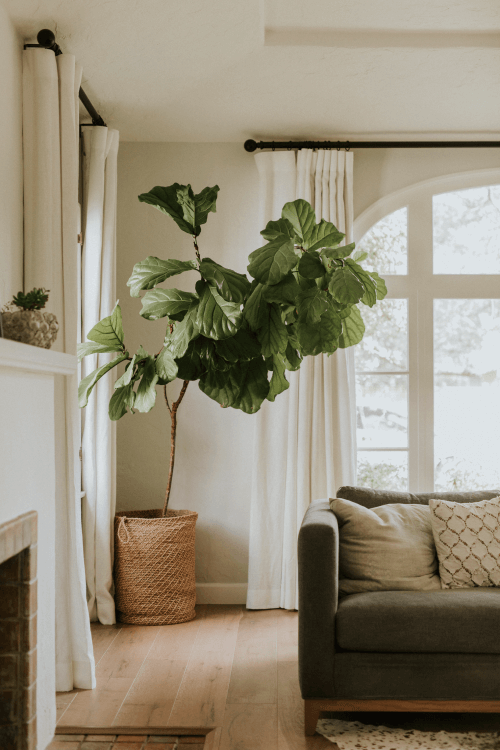
Vintage and antique elements
One of the hallmarks of farmhouse design is the use of vintage and antique elements. These pieces bring a sense of history and character to a space, telling the story of those who came before. It’s a way to honor the past while creating something new and beautiful. Imagine a farmhouse bathroom with a clawfoot tub, an antique dresser converted into a vanity, and a vintage rug on the floor. The design is unique and charming, with a sense of timelessness that transcends trends.
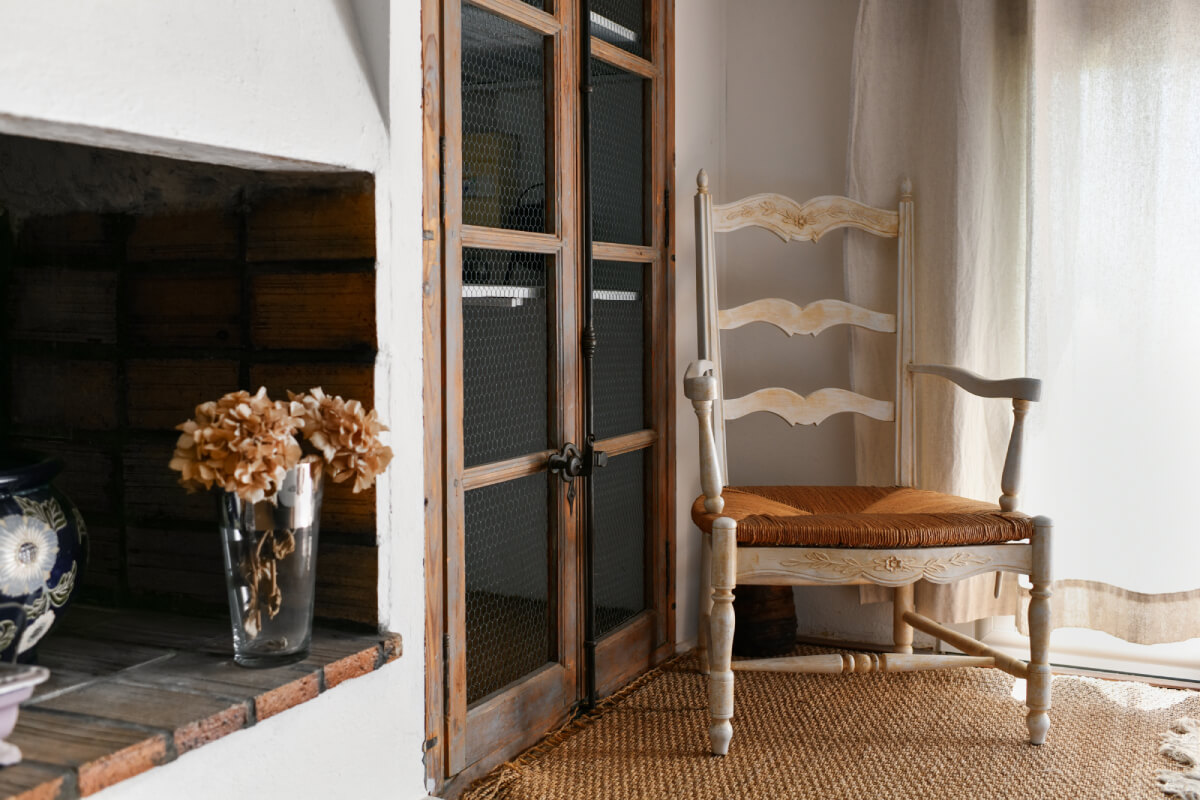
Texture Mixture
farmhouse design is known for its use of texture mixture – Combining and contrasting different textures, such as rough-hewn wood with smooth metal finishes or natural stone with sleek, modern fixtures. The goal is to create a sense of depth and interest that keeps the eye engaged. A farmhouse-style space becomes visually appealing by pairing different textures.
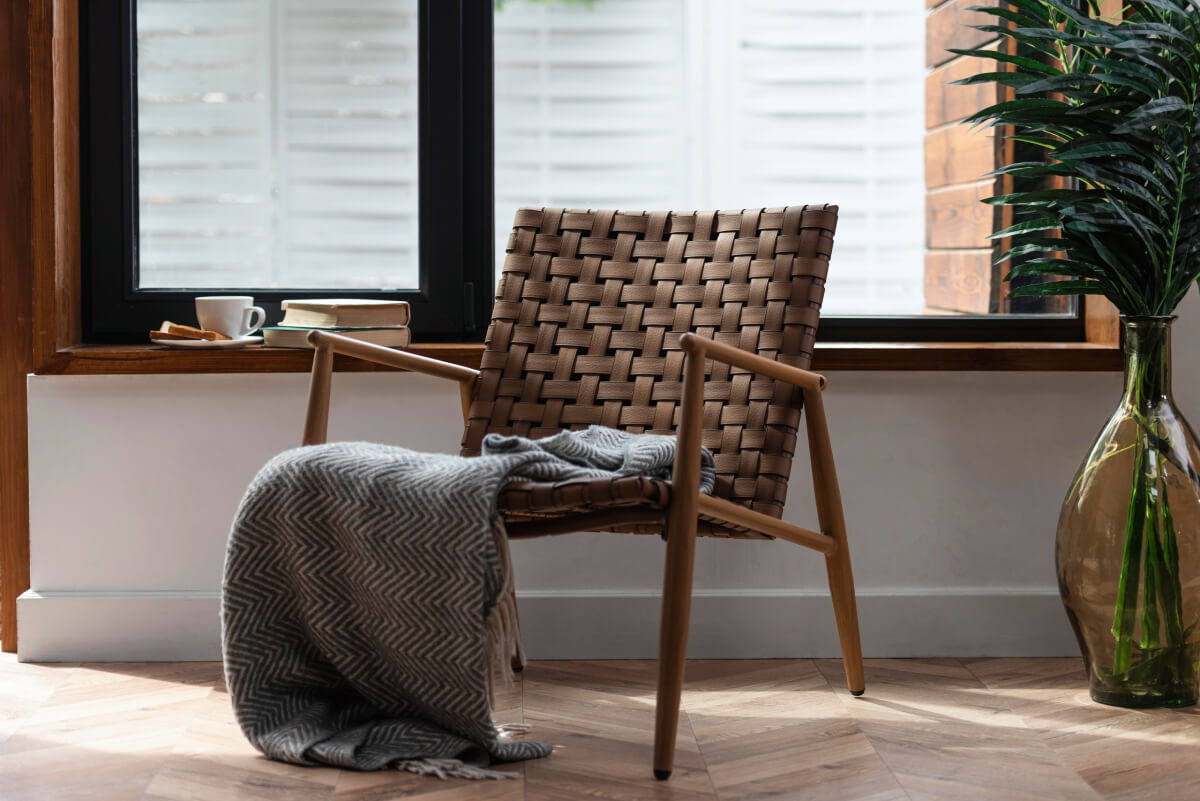
Virtual Staging with Farmhouse Style
The main advantages of virtual staging with farmhouse design is that it can help to create a sense of nostalgia and comfort. By using natural materials such as wood and stone, and incorporating natural colors and organic textures, virtual staging can create a cozy and inviting atmosphere that appeals to buyers who are looking for a sense of connection to the natural world. This can be particularly effective for properties located in rural or suburban areas.
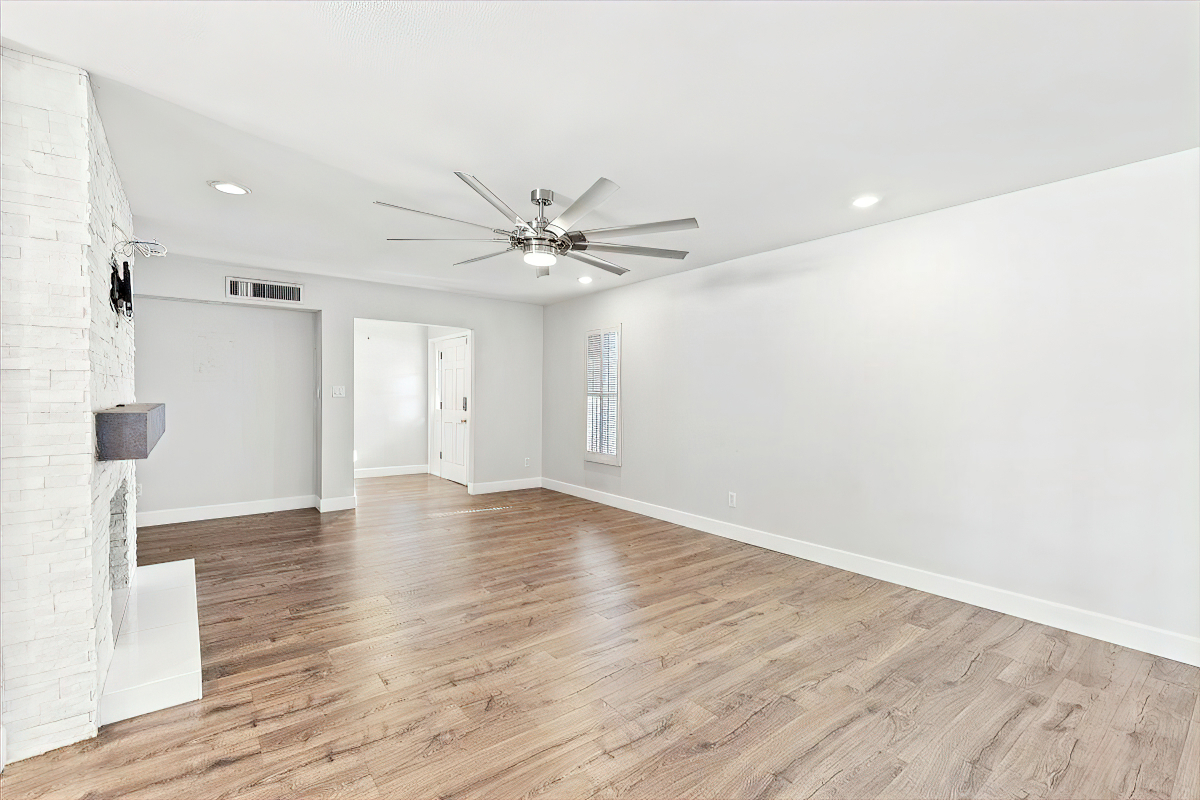
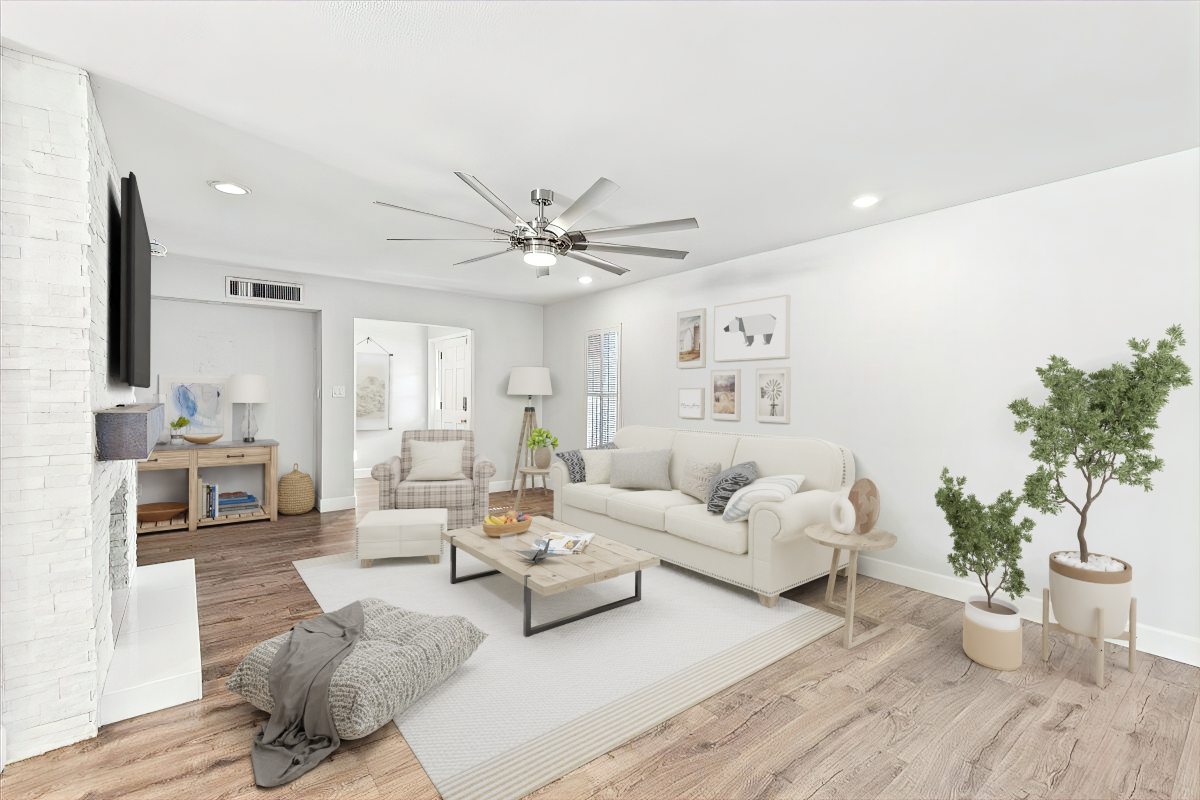
To order Virtual Staging at an unbeatable price click below!
The farmhouse vibe is created through the use of wood and natural elements.
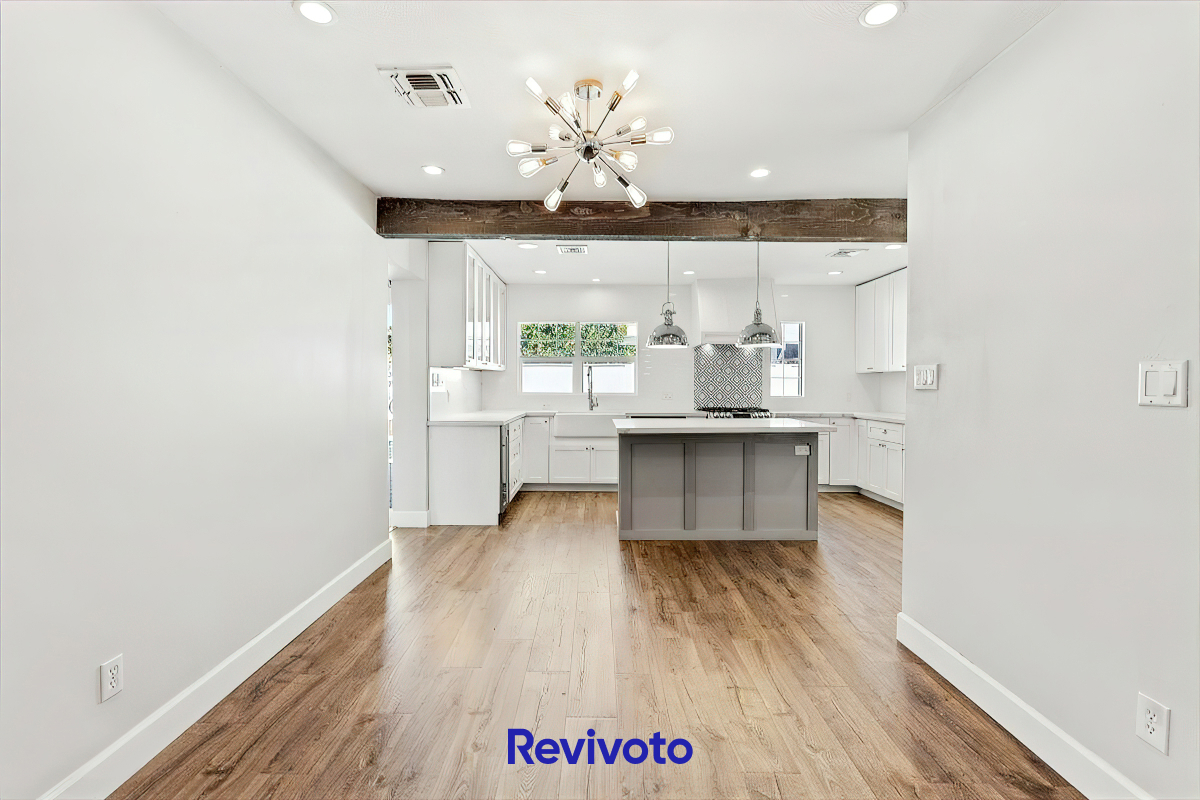
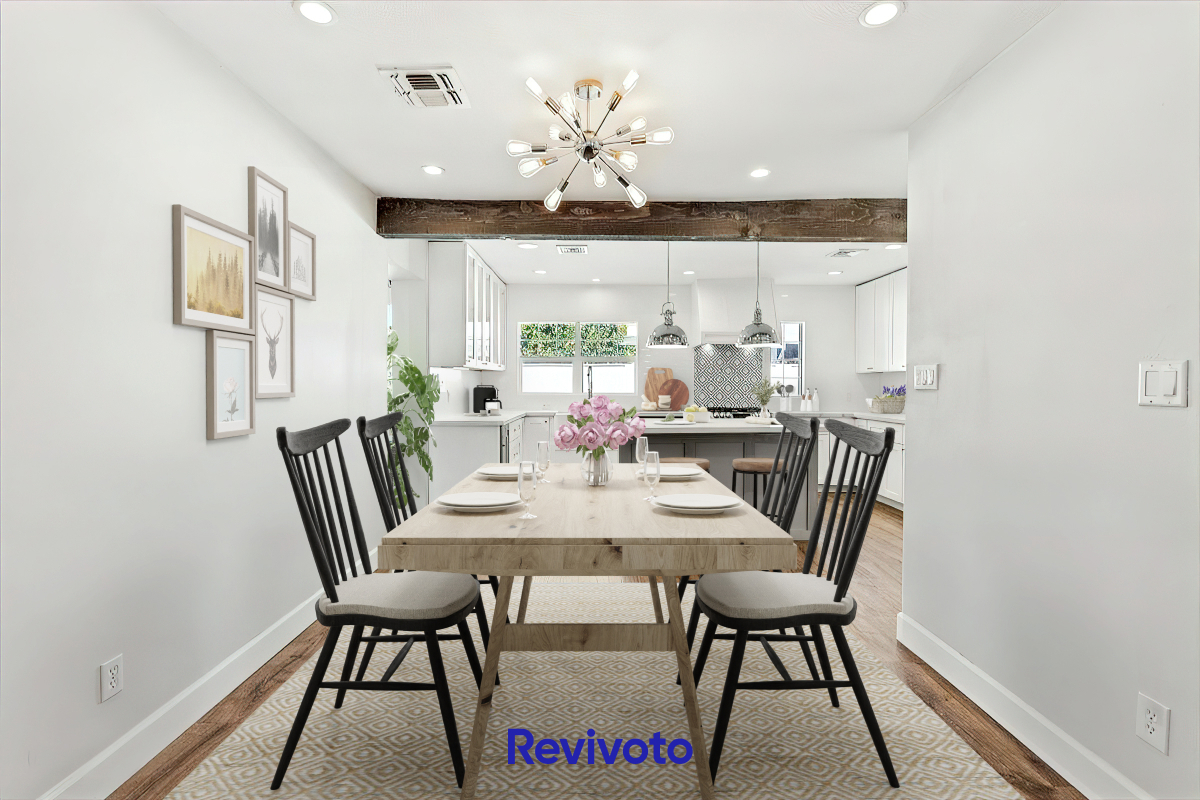
To order Virtual Staging at an unbeatable price click below!
Grouping artwork demonstrating botanical prints, landscapes, and animals is indispensable form the farmhouse style.
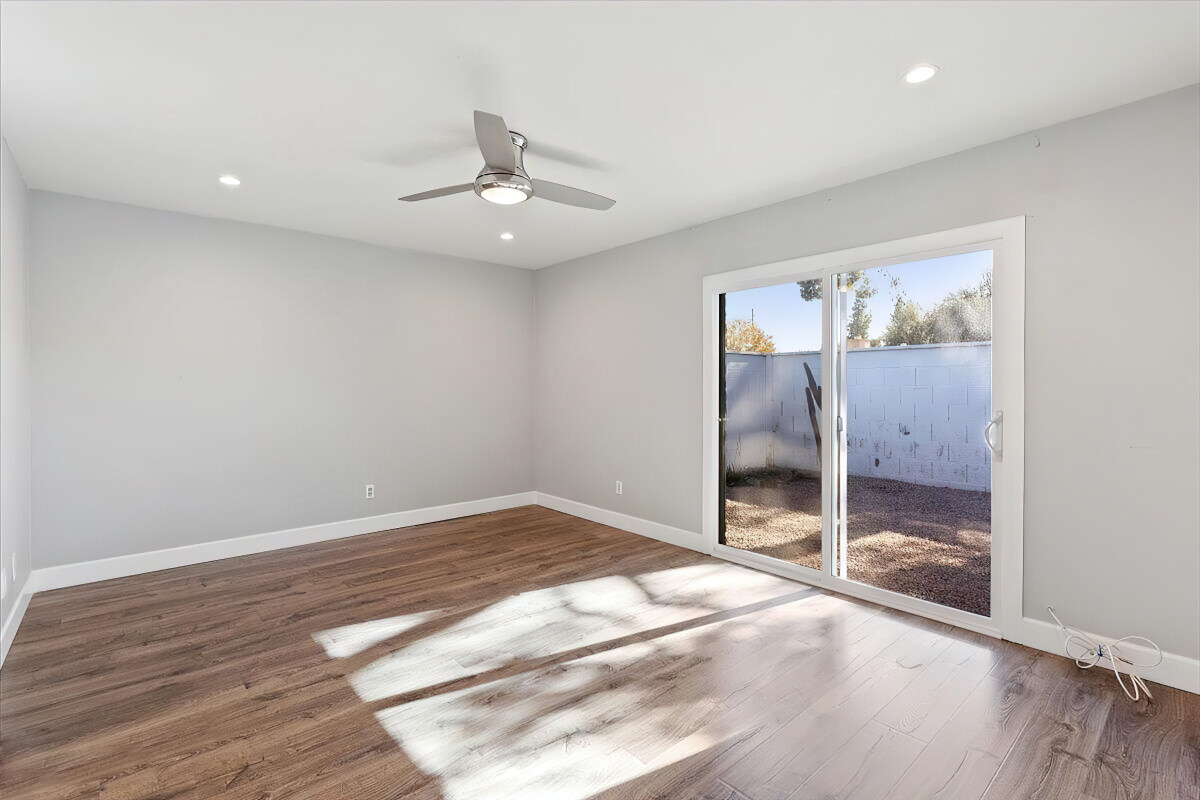
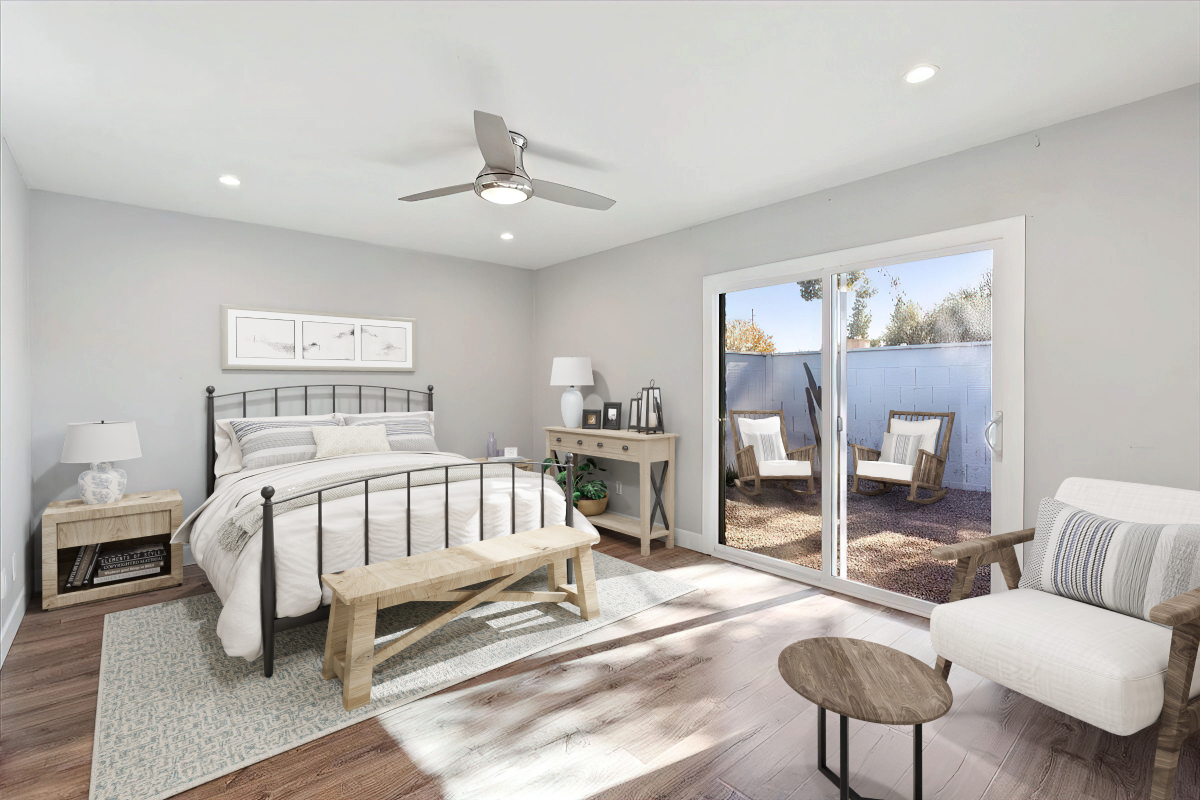
To order Virtual Staging at an unbeatable price click below!
And the final touch is always greenery that is present in every room – It could be potted plants, branches or floral arrangements. Buttom line: nature is present!
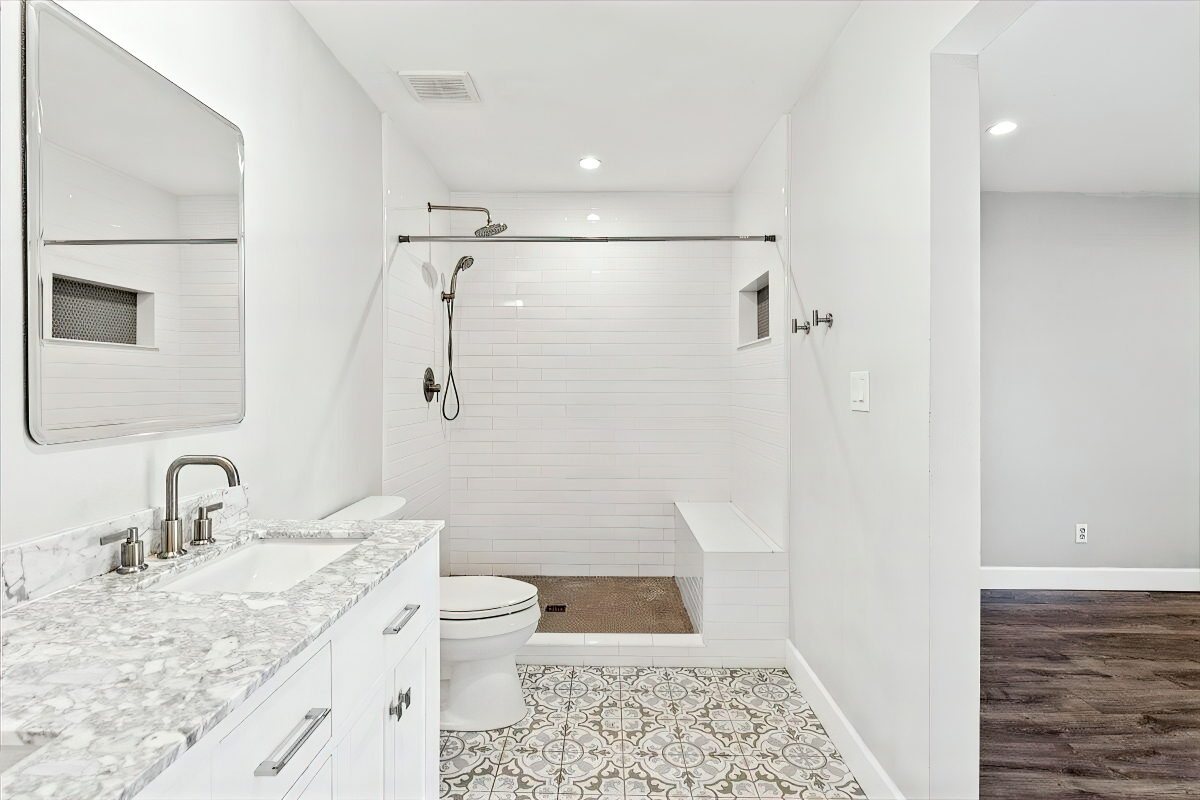
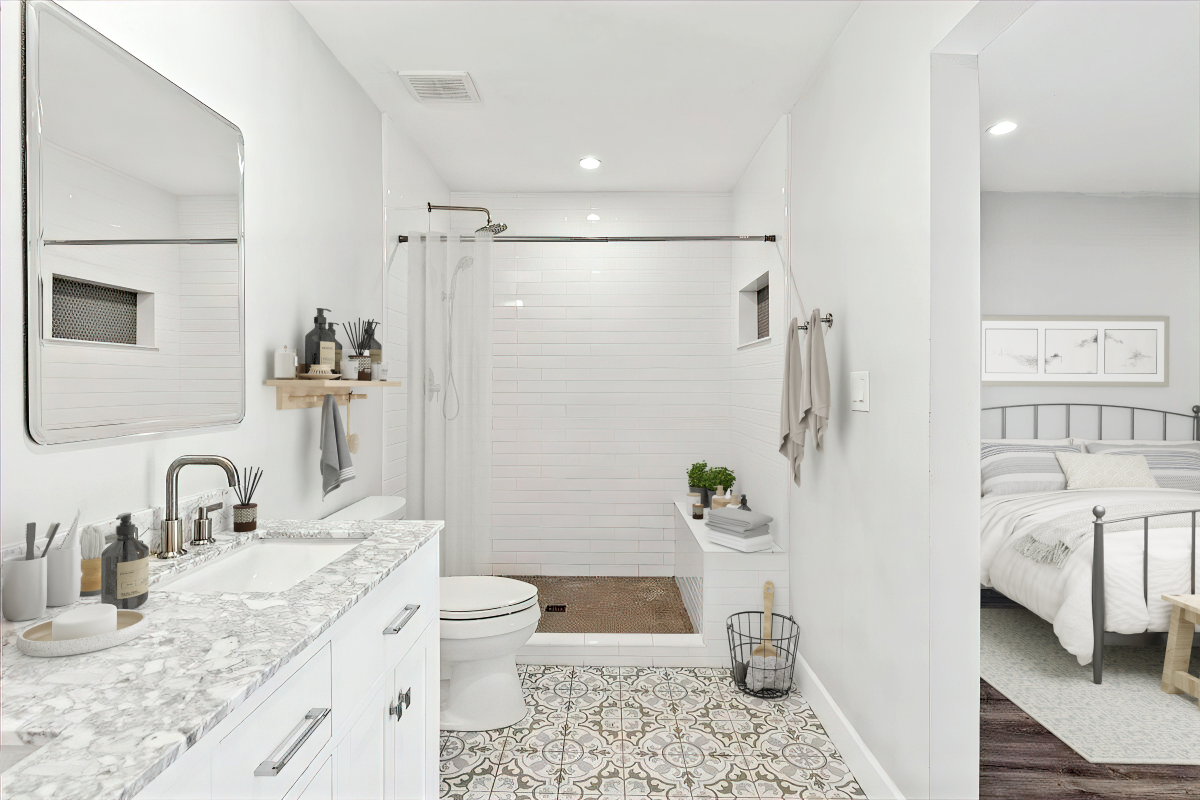
To order Virtual Staging at an unbeatable price click below!
Overall, virtual staging can be a powerful tool for reflecting farmhouse design by incorporating natural materials, neutral and warm color palettes, organic textures, vintage decor, and greenery. By creating a warm and inviting space that connects with nature, virtual staging can help potential buyers envision themselves living in a farmhouse-inspired home.
The Appeal of Farmhouse Style – When to Use It
Homebuyers who prefer the farmhouse style are often drawn to this design’s warmth, charm, and authenticity. They are looking for a home that feels like a retreat from the hustle and bustle of everyday life and celebrates nature’s beauty and the countryside’s simplicity. Here are a few characteristics of homebuyers who might be attracted to the farmhouse style:
- Nature lovers: Homebuyers who love the outdoors and crave a connection to nature are often drawn to the farmhouse style. They appreciate the use of natural materials, the emphasis on open spaces, and the warm, earthy color palette characteristic of this design aesthetic.
- History buffs: Homebuyers who appreciate history and tradition may be attracted to the farmhouse style. They are drawn to the sense of heritage and character that comes with the farmhouse vibe – how it celebrates the ingenuity and resourcefulness of past generations.
- Family-oriented: Homebuyers who value family and community are often attracted to the farmhouse style. This design style’s warmth and welcoming atmosphere make it easy to host gatherings and spend quality time with loved ones. Focusing on function and practicality also means plenty of room for life’s necessities, making it an excellent fit for growing families.
- DIY enthusiasts: Homebuyers who love to roll up their sleeves and tackle home improvement projects may prefer the farmhouse style. This design aesthetic celebrates the beauty of imperfection and encourages creativity and individuality, making it an excellent fit for those who enjoy DIY and home improvement.
Final Remark
As we reviewed in this blog, the farmhouse style is built around nature and its traits. With such a cornerstone, this design speaks to those who look for a relatable and down-to-earth vibe. So, farmhouse style in virtual staging can be pretty handy if you aim for simplicity and authenticity.
FAQ
The Farmhouse and Scandinavian styles share similarities, like their use of natural materials and emphasis on simplicity and functionality. However, there are also distinct differences between the two.
The Farmhouse style is rooted in the traditional homes found on farms in rural America. It emphasizes a warm, welcoming atmosphere focusing on natural materials such as wood and stone and practicality and comfort. Farmhouse style often features rustic elements such as distressed or reclaimed wood, vintage accessories, and warm, earthy color schemes.
On the other hand, the Scandinavian style originates from the Nordic countries of Europe, which have long, dark winters and a deep appreciation for simplicity and functionality. The Scandinavian design is characterized by a minimalist aesthetic emphasizing clean lines, light colors, and natural materials such as wood, leather, and wool.
So while both Farmhouse and Scandinavian styles share a love of natural materials and practicality, they differ in their overall aesthetic and the cultural traditions that form their design.


